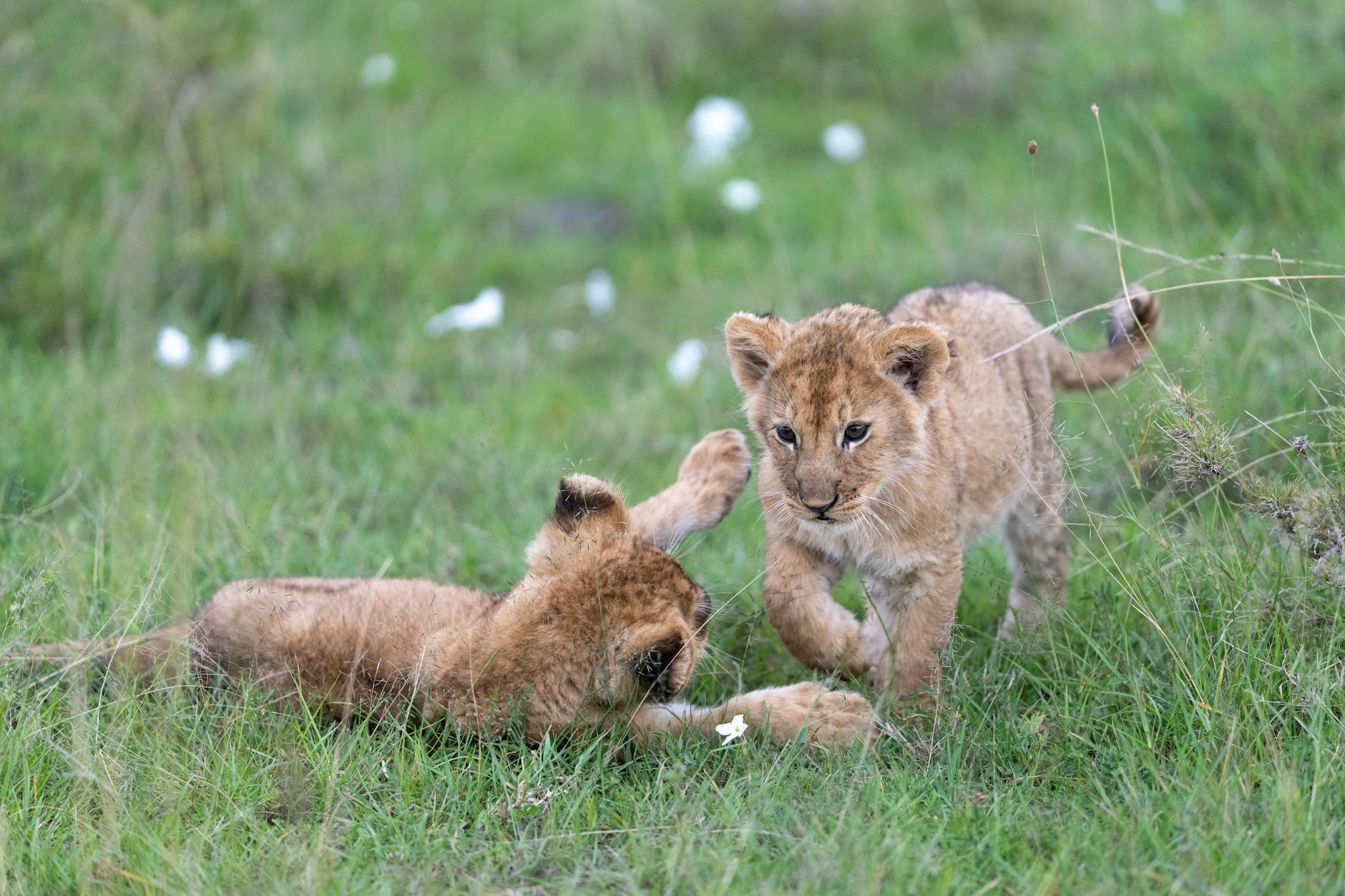
In our last posts in this series, we explored the power of lion prides and the brotherhood of male coalitions. But what about the smallest members of a pride—the cubs? Born into a world of cooperation and conflict, lion cubs face a perilous path to adulthood. Only a fraction will survive long enough to one day join a coalition or become a hunting matriarch.
In this post, we’ll uncover the fascinating (and often brutal) world of lion cub survival: how they’re born, raised, protected—and what threatens them most.
Lion Cubs at Birth
Lionesses within a pride often give birth around the same time, a strategy known as synchronized birthing, which helps with cooperative care.
- Gestation period: ~110 days
- Litter size: Usually 2–4 cubs
- Weight at birth: Around 2–4 pounds
- Eyes: Closed for the first week
- Initial weeks: Lionesses hide their cubs in dense cover, visiting only to nurse
During this secluded stage, cubs are vulnerable to predators like hyenas, leopards, eagles, and even male lions.
Rejoining the Pride
At around 6–8 weeks, lionesses bring their cubs out of hiding and introduce them to the rest of the pride. From that point on, they:
- Suckle communally from any lactating female (not just their own mother)
- Learn social behaviors through play
- Begin to follow the pride on hunts as they grow
This communal rearing system boosts cub survival—but only if the pride remains stable.
The Biggest Threat: Male Takeovers
When a new coalition of males overthrows the pride’s current males, they often commit infanticide—killing all unweaned cubs. It’s a harsh but effective evolutionary tactic. Without cubs to raise, the lionesses return to estrus quickly and become receptive to mating.
This means:
- Cubs younger than 9 months old are at high risk during takeovers
- Lionesses may attempt to hide cubs, but this is rarely successful
- Some lionesses may defend their cubs and even leave the pride temporarily
If the takeover males succeed, they become the sires of the next generation—assuming those cubs survive.
Growing Up: From Cubs to Subadults
At 6 months:
- Cubs begin to eat meat, though they still nurse occasionally.
- Play becomes more serious, building hunting and fighting skills.
At 1 year:
- Cubs join hunts, though they rarely catch prey themselves.
- They’re now “subadults,” still dependent on the pride for food and protection.
By 2 years:
- Young males begin to feel pressure to leave the pride.
- Females may stay with their mother’s pride for life (unless the pride splits).
Cub Mortality: The Stark Reality
It’s estimated that up to 80% of lion cubs die before age 2. Causes include:
- Infanticide by rival males
- Predation by hyenas, leopards, or other lions
- Starvation, especially if food is scarce
- Disease and parasites
Those that survive face better odds, but their journey is still shaped by pride politics, male dominance, and the unforgiving environment.
The Role of the Pride in Survival
Cubs are more likely to survive in prides with:
- Stable male coalitions
- Multiple adult lionesses (for shared nursing and protection)
- Good access to prey and water
- Safe, secluded denning areas
In short, strong social structures—like those we’ve explored in earlier posts—are essential for cub survival.
Final Thoughts
Lion cubs may be born into one of the animal kingdom’s most iconic societies, but their early life is a gamble. Only through the coordination of lionesses, the protection of males, and a bit of luck do they survive long enough to become the next generation of hunters, defenders, and leaders.
Coming next in this series: How lionesses hunt—strategy, cooperation, and what makes them Africa’s apex huntresses.
More photos below ↓






Disclaimer: This blog post is for edutainment purposes only and may not be entirely accurate.






